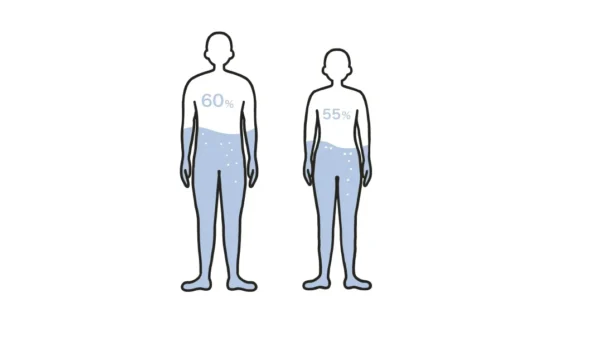The DASH diet is a scientifically-based nutrition plan specifically designed to prevent and treat high blood pressure (hypertension). This diet, whose acronym stands for “Dietary Approaches to Stop Hypertension,” focuses on foods rich in potassium, calcium, magnesium, and fiber while reducing salt and saturated fat intake. DASH offers a flexible and practical model that encourages healthy eating habits rather than strict rules.
The DASH diet not only lowers blood pressure but also improves cholesterol levels and reduces the risk of heart attack and stroke. This diet serves as an ideal guide for anyone who wants to protect their heart and vascular health. In this article, we will comprehensively discuss what the DASH diet is, its basic principles, benefits, and how you can integrate it into your daily life.
What is the DASH Diet?
The DASH diet is a nutrition plan designed to lower high blood pressure and has been scientifically proven effective for many years. This diet limits sodium intake while increasing the intake of minerals such as potassium, calcium, and magnesium that help lower blood pressure. Fruits, vegetables, whole grains, lean proteins, and low-fat dairy products form the foundation of the DASH diet.
The DASH diet is actually a healthy way of eating that can be sustained for life rather than a “diet.” Its purpose is not just to lose weight, but to support your heart health in the long term by regulating your body’s fluid balance and maintaining the flexibility of your blood vessels.
What are the Basic Principles of the DASH Diet?
The basic principles of the DASH diet emphasize food groups that help lower blood pressure and limit those that may be harmful. The focus of this diet is to consume fresh, natural, and nutritionally valuable foods instead of processed foods and fast food. This approach improves not only your blood pressure but also your overall health.
The main nutritional principles of the DASH diet are:
Limiting Salt (Sodium) Consumption:
You should limit your daily sodium intake to 2300 mg (approximately 1 teaspoon). If possible, reducing this amount to 1500 mg can give more effective results. You should avoid salty snacks, pickled products, and ready meals.
Prioritizing Fruits and Vegetables:
You should take care to consume plenty of fruits and vegetables at every meal. These foods are rich in potassium, magnesium, and fiber that help balance blood pressure.
Whole Grains:
Instead of white bread, rice, and pasta, you should prefer fibrous whole grains such as whole wheat products, oats, brown rice, and bulgur.
Lean Protein Sources:
By reducing red meat consumption, you should include lean protein sources such as fish, chicken, turkey, and legumes (lentils, chickpeas) more frequently at your table.
Low-Fat Dairy Products:
Products such as fat-free or low-fat yogurt, milk, and cheese meet your calcium and protein needs.
Healthy Fats:
You should avoid saturated fats and trans fats. You should consume healthy, unsaturated fat sources such as olive oil, avocado, and nuts in limited amounts.
Sweets and Sugary Beverages:
You should reduce sugar and sweet consumption as much as possible. Instead of carbonated drinks, you should drink plenty of water or herbal teas.
What are the Benefits of the DASH Diet for Heart Health?
In addition to its success in lowering blood pressure, the DASH diet also provides many important benefits for your overall heart health. This diet helps your blood vessels stay more flexible, improves your cholesterol levels, and reduces the risk of cardiovascular events such as heart attack and stroke. By taking good care of your heart with healthy foods, you increase your chance of living a long and quality life.
The main benefits of the DASH diet for your heart health are:
Lowering High Blood Pressure:
The most obvious benefit of the DASH diet is its effectiveness in lowering high blood pressure. By limiting sodium and increasing potassium, calcium, and magnesium, you can lower your blood pressure within a few weeks.
Improving Cholesterol Levels:
Since it reduces saturated fat and cholesterol intake, it helps lower your bad (LDL) cholesterol levels and raise your good (HDL) cholesterol levels.
Reducing Heart Attack and Stroke Risk:
By keeping blood pressure and cholesterol levels under control, it slows the development of arterial hardening (atherosclerosis) and reduces the risk of serious cardiovascular events such as heart attack and stroke.
Helping with Weight Control:
Since it focuses on high-fiber, low-fat, and nutritious foods, it makes it easier for you to lose weight healthily and maintain your ideal weight.
How Do You Start Implementing the DASH Diet?
You don’t need to make radical changes to start the DASH diet. You should start with small steps and gradually acquire new habits. First, you can start tracking your daily sodium intake and prefer fresh vegetables and fruits instead of processed foods. Gradually reducing salt use, adding flavor to your meals with spices, and drinking plenty of water makes it easy to adapt the diet to your life.
Practical suggestions to help you start the DASH diet:
Reduce Salt:
Stop using salt when cooking and using a salt shaker at your table. Instead, prefer natural flavor enhancers such as spices, fresh herbs, lemon juice, or garlic.
Control Portions:
You should pay attention to portion control, especially with whole grains and protein sources.
Plan Your Snacks:
For snacks, consume healthy options such as a handful of nuts, fruit, or yogurt instead of salty snacks like chips or cookies.
Reduce Meat Consumption:
By reducing your weekly red meat consumption, meet your protein needs from fish, chicken, and legumes.
Learn to Read Labels:
When shopping, read food labels and prefer products with low sodium content. Look for products labeled “salt-free” or “low-salt.”
Drink Plenty of Water:
You should drink plenty of water throughout the day to maintain your body’s fluid balance.
Who Should Follow the DASH Diet?
The DASH diet is especially recommended for individuals who have high blood pressure or are at risk of developing high blood pressure. However, those with heart disease, diabetes, or kidney disease can also improve their health by following this diet. Although the DASH diet is generally a safe nutrition plan, if you have any chronic health problems or a special condition (such as kidney disease), you should definitely consult a specialist before starting the diet.
When Should You Consult a Dietitian?
It is quite easy to follow the DASH diet on your own, but in some special situations, it is important to get support from a dietitian or doctor. If you have kidney disease, you may need to limit your potassium intake; if you have heart failure or another chronic disease, you may have special nutritional needs. In such cases, consulting a specialist to create a DASH diet plan specifically for you is the safest approach.
You need to consult a specialist in the following situations:
Chronic Health Problems:
If you have a chronic disease such as kidney disease, heart failure, or diabetes.
Special Nutritional Requirements:
If you are pregnant, breastfeeding, or following a vegetarian/vegan diet.
If You Have Questions:
If you are not sure about how to implement the diet or think you need a special nutrition plan.
Medication Use:
If you regularly use medications for blood pressure, heart, or kidney disease. You should get information from your doctor or dietitian about diet and drug interactions.
Reference: DASH Diet






